Startup 1917 - the way Matsushita: from $ 50 to a global corporation
The hero of this publication has become an icon of modern business, a legend in the world of audio technology and other electrical equipment. His management work is a reference book for many executives, both in his homeland in Japan and around the world. Konosuke Matsushita and his company have come a long and difficult path from the handicraft workshop to the world giant.
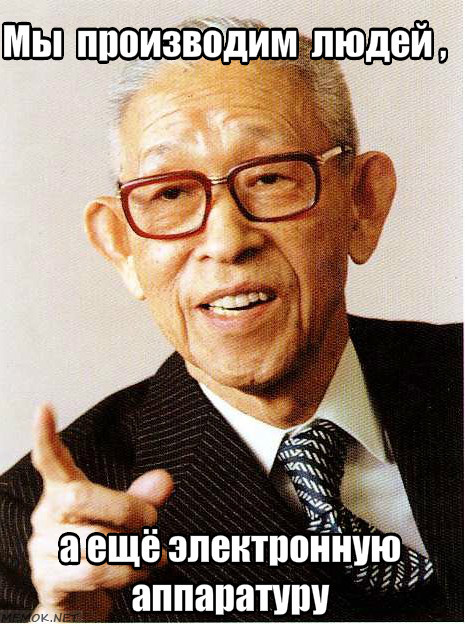
For us, 1917 is almost always associated with the October and February revolutions, serious upheavals in the life of the country. Not many people know that while the Bolsheviks overthrew the provisional government in Japan, an unknown but ambitious entrepreneur Konosuke Matsushita laid the foundation for completely different revolutions. Revolutions in engineering, business, marketing. He was one of those people whose success to this day inspires technical startups. Thanks to this man, the world learned about such brands as Matsushita Electric , National , Technics , Panasonic .
')
In this material, a story about his life, his principles, and how faith in people, ingenuity, firm convictions, overcomes all circumstances and makes it possible to go from making handicraft plugs to mass production of smartphones.
It was Matsushita who became one of the first businessmen who formulated the principles of social corporate responsibility and public-private partnership.
Most of all, Konosuke succeeded in the production of mass audio and video equipment, radio equipment, and televisions. It was he who was one of the authors and adherents of the idea of the ubiquitous distribution of affordable electronic equipment. Today, Panasonic is one of the world's largest manufacturers of consumer electronics, ranging from audio systems, media centers, smartphones and headphones, to microwave ovens, televisions, and vacuum cleaners.
Matsushita began working very early, at 9 years old. The family needed money, as his father went bankrupt as a result of reckless exchange speculation. His enthusiasm for modern technology probably began in 1910, when 18-year-old Konosuke took a job at Osaka Light. It was this company that provided electricity to the city, and in 1909, it launched the first electric tram in Osaka.
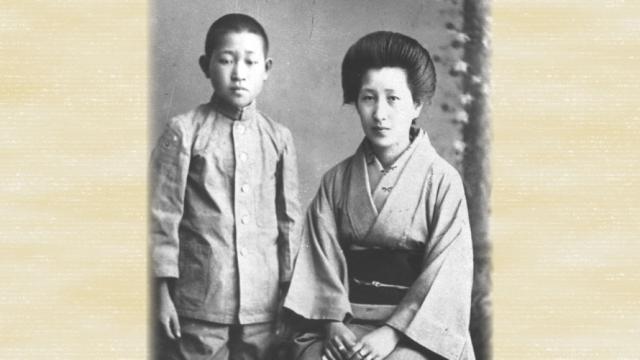
While working at Osaka Light, Matsushita proposed his first innovation, an improved electrical plug, the development of which he gave free time. The then employers of the future billionaire reacted coldly to the invention, finding that the new plug could not bring profit.
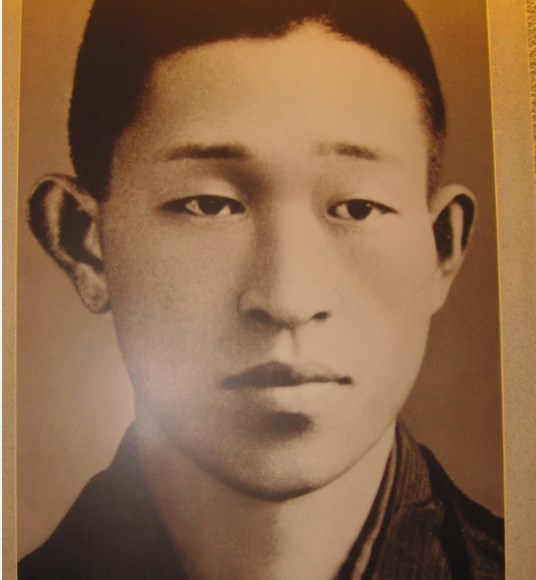
The young Japanese believed in the success of his innovation, and, like modern startups, quit his job, opening up a tiny cottage industry. The idea was promising, especially given the time in which it appeared. In an interview, Matsushita said more than once that the idea of creating his own business appeared not without the influence of his father, who developed an entrepreneurial attitude in his talented son. At the same time on the project at Matsushita was only 100 yen ($ 50).
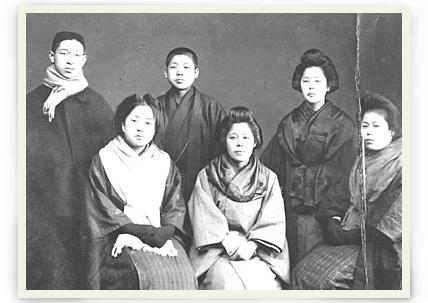
Matsushita Electric was created as a semi-handicraft family-owned business where Konosuke himself, his wife and brother-in-law Toshio Iue (later president of Sanyo) worked, and later on it was possible to hire two more workers. By the end of the first year of its existence, the company was on the verge of financial collapse. Most likely, it would have disappeared, but suddenly the entrepreneur received a large order from Kawakita Electric for the manufacture of 1000 insulation boards for fans. It was then that, in 1918, breaking into the already occupied market segment, Matsushita formulated a fundamentally new formula for successful production, known as the 30 percent law:
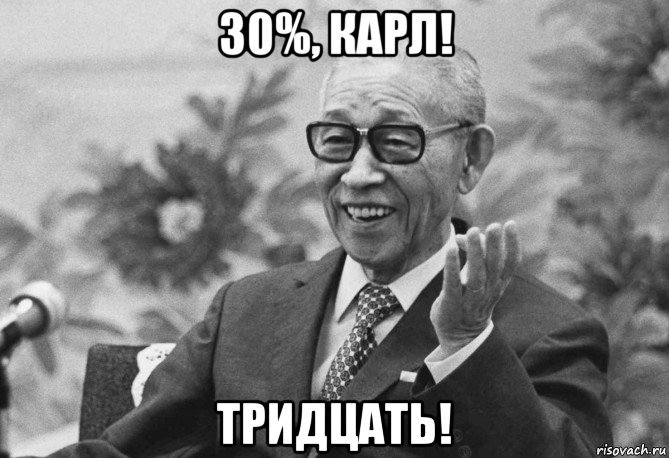
Thanks to a successful deal with Kawakita Electric, Matsushita received the next, even more profitable order, was able to rent a two-story house and continue with the production of plugs. After a short time, Konosuke noticed that in Japan there is a growing demand for double bulbs for incandescent bulbs. The company has mastered a new type of product, which very quickly gained popularity with the consumer, ensuring stable growth and development.
Since 1923, Konosuke begins to release another, popular at the time, product. The company develops the production of bicycle lamps (headlights working on a battery). The rechargeable lamps that existed at that time were distinguished by a very short operating time, not more than 3 hours. For four months, Konosuke experimented with electrolytes, which allowed him to create a battery that provides lamps for up to 40 hours.

Creating a product that surpassed almost all existing analogues, Matsushita almost burnt through. The fact is that the buyers, having seen the promise of 40-hour work, simply did not hurry to believe in it, and the bicycle lights remained unclaimed for a long time. Then Matsushita offered his trading counterparties to take goods for sale and pay money after the fact. Time and a new marketing principle did their job and led lights became popular, overcoming the resistance of the inertia of consumers.

Moving to the next stage of development, the company begins to produce electric table lamps, which are gradually replacing the traditional kerosene for Japan. To promote this product, the first National brand appears.
In 1929, after the collapse of the New York Stock Exchange, Konosuke Matsushita was on the verge of extinction. Despite the influence of the Great Depression on the Japanese economy, Konosuke did not take the beaten path of massive crisis layoffs. Contrary to the expectations of partners and competitors, the head of Mutsuhito Electric gathered the company's employees and announced the following to them:
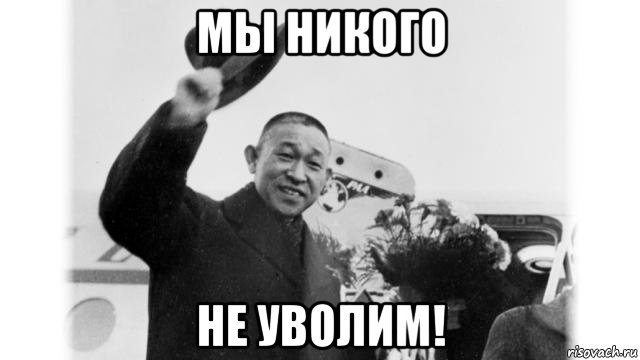
The businessman’s anti-crisis strategy was based on maximizing production costs (without affecting wages) and limiting employee involvement in the business of saving the company. Part of Konosuke’s policy paid off. For several months, the company's crisis sales remained stable. However, the general decline in demand could not but affect the statistics. On December 1, 1929, sales of Matsushita Electric fell to a psychological mark of 50%, which required the adoption of emergency measures. Representatives of the company's management were close to the decision to reduce half of the employees, but Matsushita flatly replied:
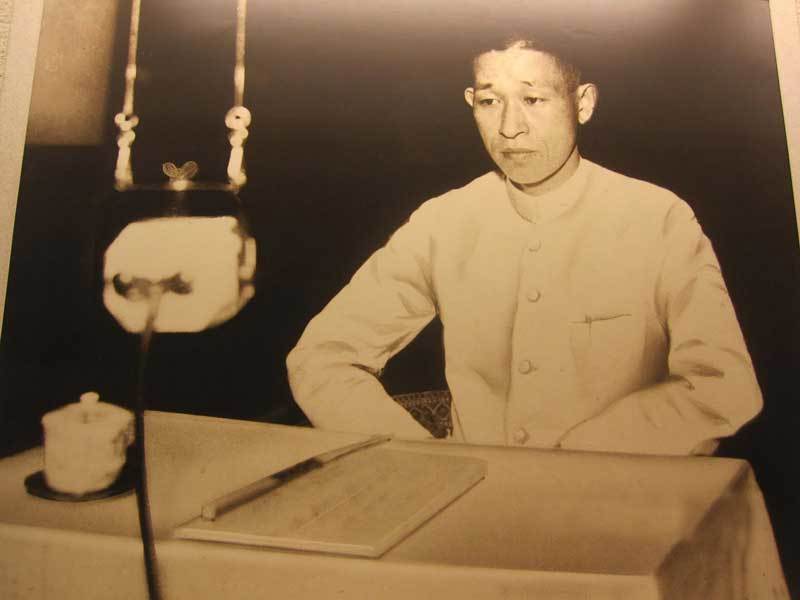
Matsushita’s original decision shocked the rest of the firm’s executives, while
incredibly raising his credibility among workers and employees. Each of the employees spent 2 hours a day distributing products, which led to the almost instantaneous liquidation of Matsushita Electric's warehouse surplus. Konosuke Matsushita was the only head of a Japanese company that didn’t cut a single employee in 1929. Moreover, it was during this period that product diversification was intensified and the production of radio receivers and audio equipment began .

In 1932, analyzing the success of his anti-crisis policy, Konosuke Matsushita formulates one of the first paradigms of business social responsibility, which boil down to the principle:
Matsushita defines the company's mission as follows:
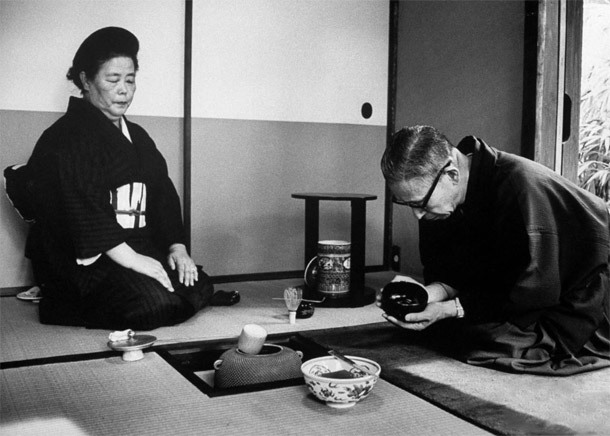
Well understanding the traditional values of Japanese society, Konosuke initially created the company as a large family, and sincerely believed in his employees. In addition, he is actively developing the ideology of unity of business, society and the state, which is very close to the majority of the Japanese of his generation. Creating corporate principles for the company's employees, Konosuke closely connects the concept of personal prosperity, company prosperity and nation prosperity. This approach gave excellent results, and the company began to grow and develop steadily until the beginning of the Second World War.

Konosuke did not stop at creating special principles of corporate ethics, sincerely believing in increasing the effectiveness of the company’s work through the personal growth of its employees, he founded the “Institute for Employee Training”. The educational institution opened its doors in 1934 to the production of Kadom. Matsushita well understood the value of education, since he, due to circumstances, was not able to get it.

In one of the interviews, when asked about what his company does, Konosuke answered:
In 1963, in a public televised conversation with Japanese Prime Minister Hayato Ikeda, Matsushita, as an adherent of traditional values, he defended spiritual education, saying that it along with other traditions is vital for Japan’s national future.
The military confrontation between Japan and China, which grew into a theater of operations of the Second World War, was the most difficult period for the company Konosuke, however, as well as for the whole of Japan.
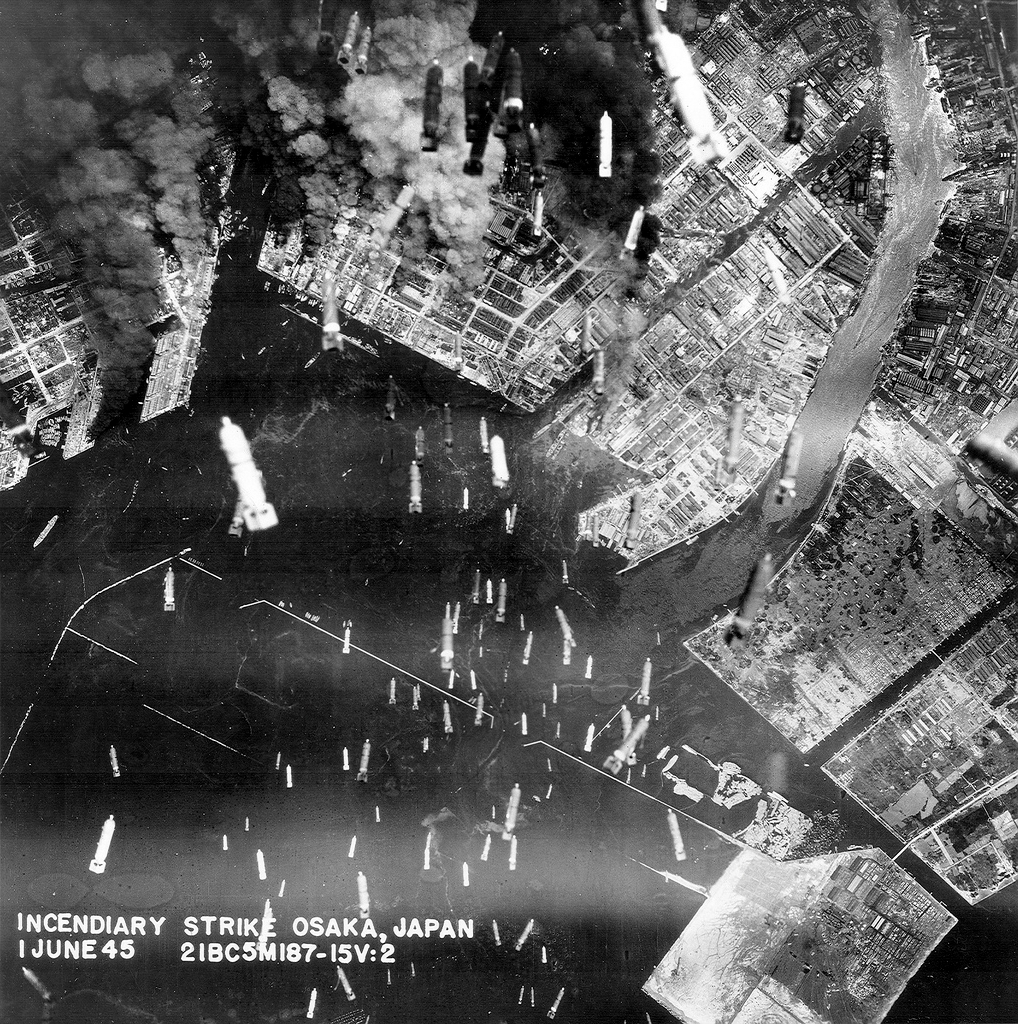
With the beginning of the war, under pressure from the political elite of Japan, the company began to work on the military-industrial complex of the country. The principle of unity of employees, the company and the state cost Konosuke dearly, during the bombardments the company loses 32 production facilities, as well as large offices in Tokyo and Osaka. From massacre and liquidation of the company, during the American occupation, the “sensei of Japanese management” were saved only by the mass demonstrations of the workers loyal to the head.

The post-war years, in the war-torn Japan, also did not bode well. The main product of the company were batteries, lamps and radios, which were not widely demanded by the rapidly impoverished population. Despite the hardship and deprivation of post-war life, the dedication of employees and the production base that remained after the bombings did not let the company die. Recovering from the "military syndrome", Matsushita Electric continued to develop at a pre-war pace.
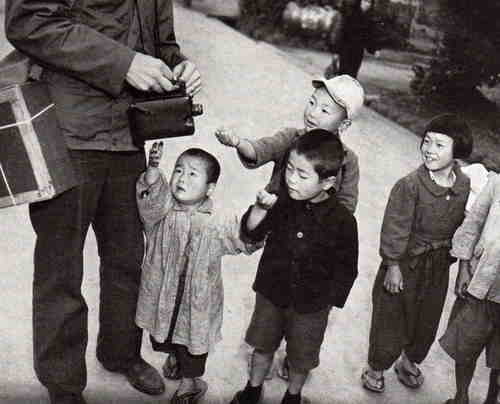
In 1951, Matsushita declared that the power, resources and quality of Matsushita Electric products make it possible to occupy a worthy place in the global economic community. To assess the level of American industrial enterprises, Konosuke made a visit to the United States, and was disappointed by the huge technological and industrial backlog of Japan. To overcome this gap, his company needed more in-depth knowledge of electronics , changing production approaches.
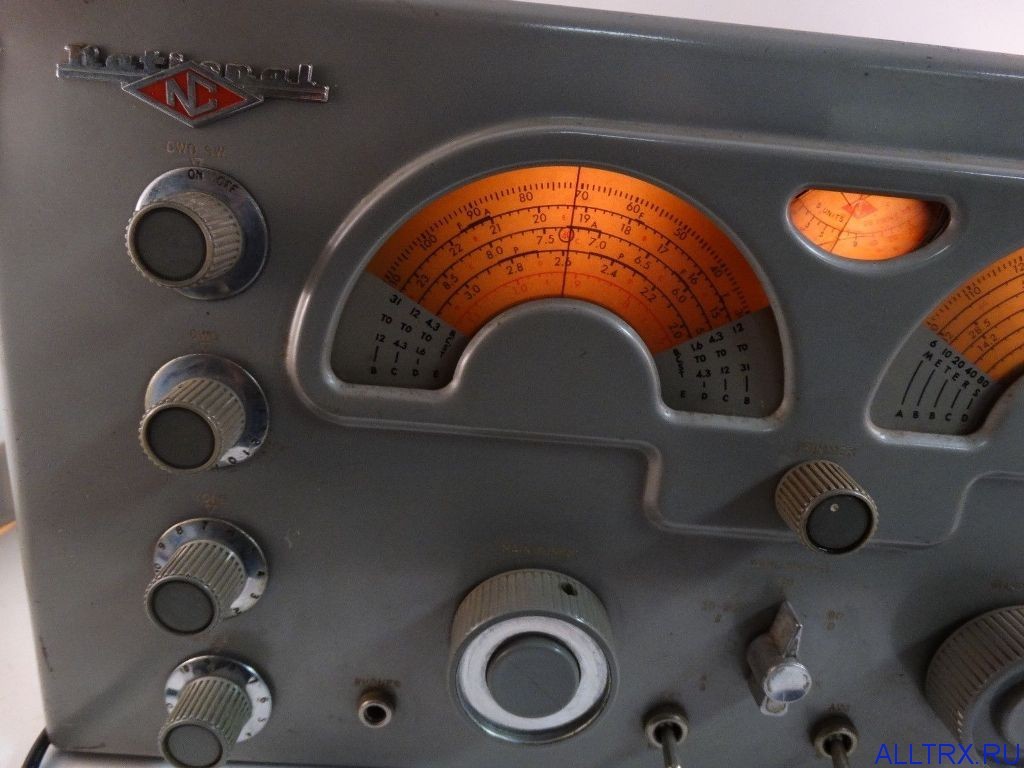
In the mid-50s, Konosuke initiated a mutually beneficial partnership between Matsushita Electric and Philips. This is how a joint venture emerges that can manage to outstrip practically all American companies in technological development. The equipment released by this division bears a new name, this is how the Panasonic (National Panasonic) brand is born.

The company managed by Konosuke won in three major battles of its history. The battle for audio was won in the national market back in the 60s, when, jointly with Philips, the production of radio receivers, tape recorders and players under the brand National Panasonic began . The key to success was the development that began in 1957.
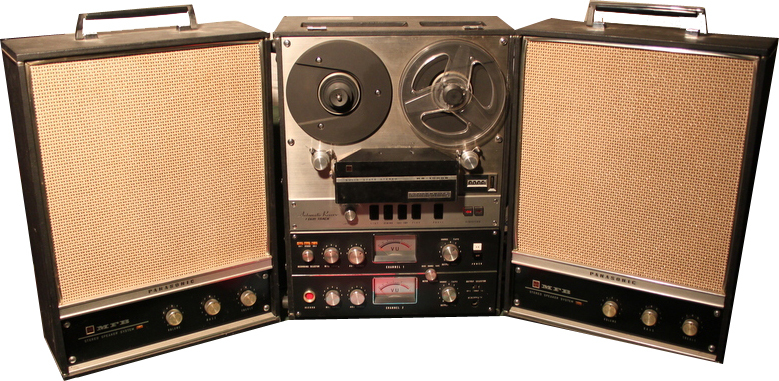
At the same time, in the western markets, for 2 decades, the corporation overcame the market of "three treasures" (washing machines, refrigerators and televisions), and later the fourth - vacuum cleaners. Finally, the battle for the video (late 70s) with a constant competitor, the company SONY. It was possible to bypass the opponent by combining efforts with JVC and relying on their new VHS format.
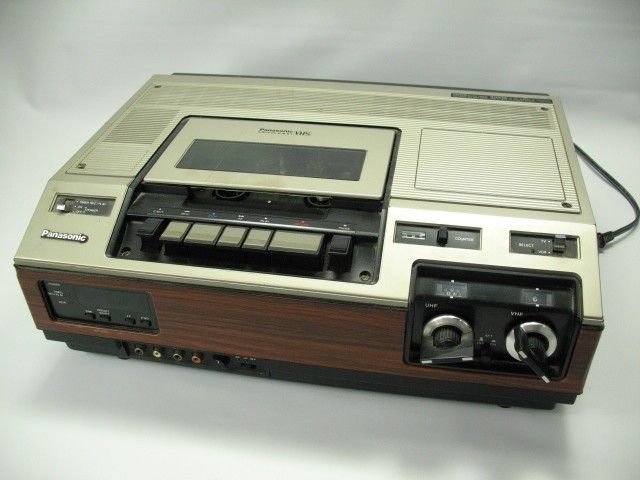
As a wise leader, Konosuke understands that age and health may not allow him to continue to actively manage the company. In 1961, at the zenith of fame, he gives a speech in which he talks about the company's successes and, completing it, announces that he is retiring.
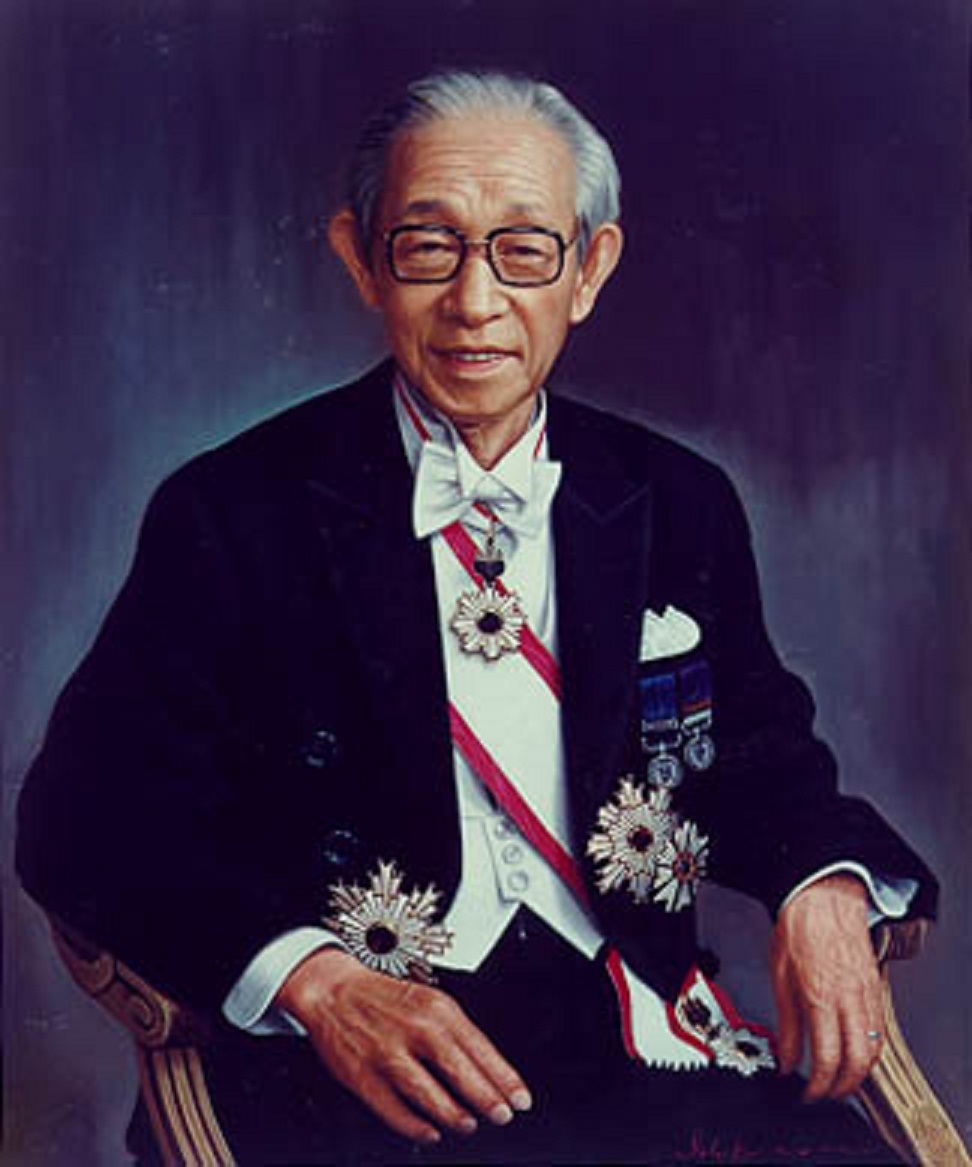
Rest on the laurels did not last long, by the mid-60s the economic situation in Japan deteriorated, and the company appealed to the founder to return. Konosuke again headed Matsushita Electric and stayed in charge until 1973. The great leader remained in the modest post of consultant, periodically returning to leadership in difficult periods. The corporate ideology laid by the founder continues to help the company today. Only in 2000, eleven years after Matsushita’s death, under the pressure of a difficult market situation, Panasonic President Kunio Nakamura decided to move away from the principle of life-long employment and cut 5% of the company's employees.
Konosuke outlined his philosophical and ideological views on the business in numerous books, becoming one of the most widely read Japanese authors in the world.
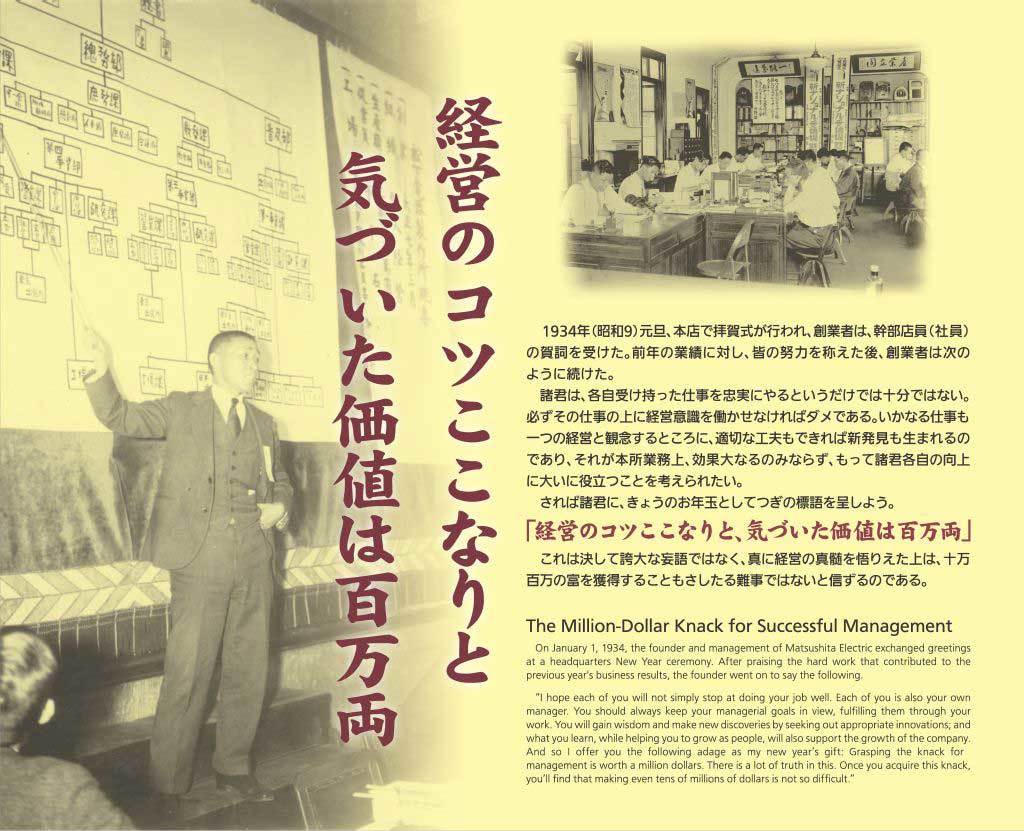
In his writings, he formulated 7 major, in his opinion, management principles:
No less important, Matsushita considered the other 7 principles that are guaranteed to ensure the success of the company:
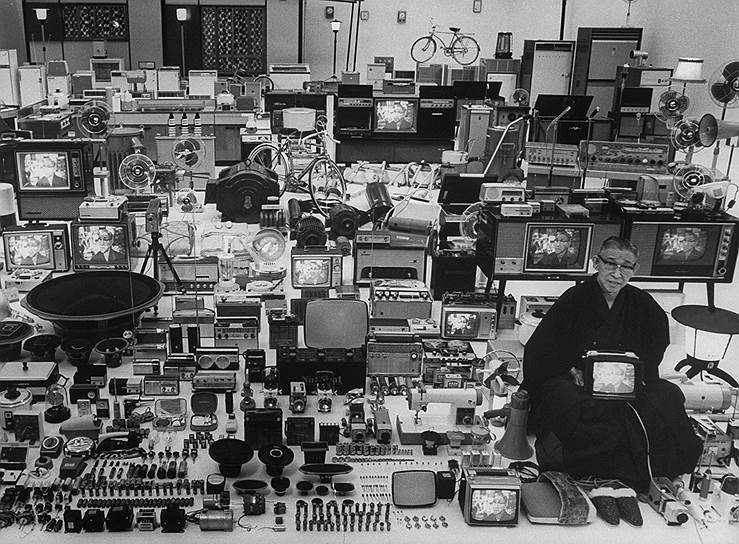
Matsushita passed away in 1989, having failed, perhaps the only one of his goals: he did not reach the third millennium just 11 years old. The corporate heritage of the founder in Panasonic is still used.

For us, 1917 is almost always associated with the October and February revolutions, serious upheavals in the life of the country. Not many people know that while the Bolsheviks overthrew the provisional government in Japan, an unknown but ambitious entrepreneur Konosuke Matsushita laid the foundation for completely different revolutions. Revolutions in engineering, business, marketing. He was one of those people whose success to this day inspires technical startups. Thanks to this man, the world learned about such brands as Matsushita Electric , National , Technics , Panasonic .
')
In this material, a story about his life, his principles, and how faith in people, ingenuity, firm convictions, overcomes all circumstances and makes it possible to go from making handicraft plugs to mass production of smartphones.
It was Matsushita who became one of the first businessmen who formulated the principles of social corporate responsibility and public-private partnership.
Most of all, Konosuke succeeded in the production of mass audio and video equipment, radio equipment, and televisions. It was he who was one of the authors and adherents of the idea of the ubiquitous distribution of affordable electronic equipment. Today, Panasonic is one of the world's largest manufacturers of consumer electronics, ranging from audio systems, media centers, smartphones and headphones, to microwave ovens, televisions, and vacuum cleaners.
Start: heavy childhood, plug plugs, fan boards and adapters
Matsushita began working very early, at 9 years old. The family needed money, as his father went bankrupt as a result of reckless exchange speculation. His enthusiasm for modern technology probably began in 1910, when 18-year-old Konosuke took a job at Osaka Light. It was this company that provided electricity to the city, and in 1909, it launched the first electric tram in Osaka.

While working at Osaka Light, Matsushita proposed his first innovation, an improved electrical plug, the development of which he gave free time. The then employers of the future billionaire reacted coldly to the invention, finding that the new plug could not bring profit.

The young Japanese believed in the success of his innovation, and, like modern startups, quit his job, opening up a tiny cottage industry. The idea was promising, especially given the time in which it appeared. In an interview, Matsushita said more than once that the idea of creating his own business appeared not without the influence of his father, who developed an entrepreneurial attitude in his talented son. At the same time on the project at Matsushita was only 100 yen ($ 50).

Matsushita Electric was created as a semi-handicraft family-owned business where Konosuke himself, his wife and brother-in-law Toshio Iue (later president of Sanyo) worked, and later on it was possible to hire two more workers. By the end of the first year of its existence, the company was on the verge of financial collapse. Most likely, it would have disappeared, but suddenly the entrepreneur received a large order from Kawakita Electric for the manufacture of 1000 insulation boards for fans. It was then that, in 1918, breaking into the already occupied market segment, Matsushita formulated a fundamentally new formula for successful production, known as the 30 percent law:
“To infiltrate an already established market, you need to do everything 30% better and 30% cheaper”

Thanks to a successful deal with Kawakita Electric, Matsushita received the next, even more profitable order, was able to rent a two-story house and continue with the production of plugs. After a short time, Konosuke noticed that in Japan there is a growing demand for double bulbs for incandescent bulbs. The company has mastered a new type of product, which very quickly gained popularity with the consumer, ensuring stable growth and development.
The birth of the National, from bicycle headlights to table lamps
Since 1923, Konosuke begins to release another, popular at the time, product. The company develops the production of bicycle lamps (headlights working on a battery). The rechargeable lamps that existed at that time were distinguished by a very short operating time, not more than 3 hours. For four months, Konosuke experimented with electrolytes, which allowed him to create a battery that provides lamps for up to 40 hours.

Creating a product that surpassed almost all existing analogues, Matsushita almost burnt through. The fact is that the buyers, having seen the promise of 40-hour work, simply did not hurry to believe in it, and the bicycle lights remained unclaimed for a long time. Then Matsushita offered his trading counterparties to take goods for sale and pay money after the fact. Time and a new marketing principle did their job and led lights became popular, overcoming the resistance of the inertia of consumers.

Moving to the next stage of development, the company begins to produce electric table lamps, which are gradually replacing the traditional kerosene for Japan. To promote this product, the first National brand appears.
1929 - the year of birth of the social role of business
In 1929, after the collapse of the New York Stock Exchange, Konosuke Matsushita was on the verge of extinction. Despite the influence of the Great Depression on the Japanese economy, Konosuke did not take the beaten path of massive crisis layoffs. Contrary to the expectations of partners and competitors, the head of Mutsuhito Electric gathered the company's employees and announced the following to them:
“We will not fire anyone! We will not cut down wages to anyone! Now everyone and everyone should understand that we are one, and business is not the most important thing! Each of you should make every effort so that our products enjoy market success. ”

The businessman’s anti-crisis strategy was based on maximizing production costs (without affecting wages) and limiting employee involvement in the business of saving the company. Part of Konosuke’s policy paid off. For several months, the company's crisis sales remained stable. However, the general decline in demand could not but affect the statistics. On December 1, 1929, sales of Matsushita Electric fell to a psychological mark of 50%, which required the adoption of emergency measures. Representatives of the company's management were close to the decision to reduce half of the employees, but Matsushita flatly replied:
“We’ll cut production in half immediately, right from today, but we don’t fire anyone. We will reduce production not due to the dismissal of workers, but we will provide them with a shorter working week. For their work, they will receive the same salary. However, all holidays will be canceled. We turn to the workers with a request to do the sale of inventory in warehouses. ”

Matsushita’s original decision shocked the rest of the firm’s executives, while
incredibly raising his credibility among workers and employees. Each of the employees spent 2 hours a day distributing products, which led to the almost instantaneous liquidation of Matsushita Electric's warehouse surplus. Konosuke Matsushita was the only head of a Japanese company that didn’t cut a single employee in 1929. Moreover, it was during this period that product diversification was intensified and the production of radio receivers and audio equipment began .

In 1932, analyzing the success of his anti-crisis policy, Konosuke Matsushita formulates one of the first paradigms of business social responsibility, which boil down to the principle:
“Business is people”
Matsushita defines the company's mission as follows:
“Our business is what society entrusts to us. Therefore, we are obliged to direct and develop the company so as to help develop the society and contribute to the improvement of people's lives. ”
Traditional values as a basis for success

Well understanding the traditional values of Japanese society, Konosuke initially created the company as a large family, and sincerely believed in his employees. In addition, he is actively developing the ideology of unity of business, society and the state, which is very close to the majority of the Japanese of his generation. Creating corporate principles for the company's employees, Konosuke closely connects the concept of personal prosperity, company prosperity and nation prosperity. This approach gave excellent results, and the company began to grow and develop steadily until the beginning of the Second World War.

Konosuke did not stop at creating special principles of corporate ethics, sincerely believing in increasing the effectiveness of the company’s work through the personal growth of its employees, he founded the “Institute for Employee Training”. The educational institution opened its doors in 1934 to the production of Kadom. Matsushita well understood the value of education, since he, due to circumstances, was not able to get it.

In one of the interviews, when asked about what his company does, Konosuke answered:
"We produce people, and also electronic equipment"
In 1963, in a public televised conversation with Japanese Prime Minister Hayato Ikeda, Matsushita, as an adherent of traditional values, he defended spiritual education, saying that it along with other traditions is vital for Japan’s national future.
The biggest hit
The military confrontation between Japan and China, which grew into a theater of operations of the Second World War, was the most difficult period for the company Konosuke, however, as well as for the whole of Japan.

With the beginning of the war, under pressure from the political elite of Japan, the company began to work on the military-industrial complex of the country. The principle of unity of employees, the company and the state cost Konosuke dearly, during the bombardments the company loses 32 production facilities, as well as large offices in Tokyo and Osaka. From massacre and liquidation of the company, during the American occupation, the “sensei of Japanese management” were saved only by the mass demonstrations of the workers loyal to the head.

The post-war years, in the war-torn Japan, also did not bode well. The main product of the company were batteries, lamps and radios, which were not widely demanded by the rapidly impoverished population. Despite the hardship and deprivation of post-war life, the dedication of employees and the production base that remained after the bombings did not let the company die. Recovering from the "military syndrome", Matsushita Electric continued to develop at a pre-war pace.

Victorious dash to the west
In 1951, Matsushita declared that the power, resources and quality of Matsushita Electric products make it possible to occupy a worthy place in the global economic community. To assess the level of American industrial enterprises, Konosuke made a visit to the United States, and was disappointed by the huge technological and industrial backlog of Japan. To overcome this gap, his company needed more in-depth knowledge of electronics , changing production approaches.

In the mid-50s, Konosuke initiated a mutually beneficial partnership between Matsushita Electric and Philips. This is how a joint venture emerges that can manage to outstrip practically all American companies in technological development. The equipment released by this division bears a new name, this is how the Panasonic (National Panasonic) brand is born.

Battles and victories
The company managed by Konosuke won in three major battles of its history. The battle for audio was won in the national market back in the 60s, when, jointly with Philips, the production of radio receivers, tape recorders and players under the brand National Panasonic began . The key to success was the development that began in 1957.

At the same time, in the western markets, for 2 decades, the corporation overcame the market of "three treasures" (washing machines, refrigerators and televisions), and later the fourth - vacuum cleaners. Finally, the battle for the video (late 70s) with a constant competitor, the company SONY. It was possible to bypass the opponent by combining efforts with JVC and relying on their new VHS format.

As a wise leader, Konosuke understands that age and health may not allow him to continue to actively manage the company. In 1961, at the zenith of fame, he gives a speech in which he talks about the company's successes and, completing it, announces that he is retiring.

Rest on the laurels did not last long, by the mid-60s the economic situation in Japan deteriorated, and the company appealed to the founder to return. Konosuke again headed Matsushita Electric and stayed in charge until 1973. The great leader remained in the modest post of consultant, periodically returning to leadership in difficult periods. The corporate ideology laid by the founder continues to help the company today. Only in 2000, eleven years after Matsushita’s death, under the pressure of a difficult market situation, Panasonic President Kunio Nakamura decided to move away from the principle of life-long employment and cut 5% of the company's employees.
Philosophy and principles
Konosuke outlined his philosophical and ideological views on the business in numerous books, becoming one of the most widely read Japanese authors in the world.

In his writings, he formulated 7 major, in his opinion, management principles:
- Contribution to the development of society
- Fairness and integrity
- Collaboration and team spirit
- Set on continuous improvement.
- Politeness and modesty
- Identifying yourself with the firm
- Company gratitude
No less important, Matsushita considered the other 7 principles that are guaranteed to ensure the success of the company:
- Consumer first
- Profit making - through ministry
- Everyone controls himself
- Everyone is involved in the management of the company.
- Coexistence as a pledge of joint prosperity
- Fair competition in the market
- People are more important than products

Exodus
Matsushita passed away in 1989, having failed, perhaps the only one of his goals: he did not reach the third millennium just 11 years old. The corporate heritage of the founder in Panasonic is still used.
Source: https://habr.com/ru/post/372935/
All Articles